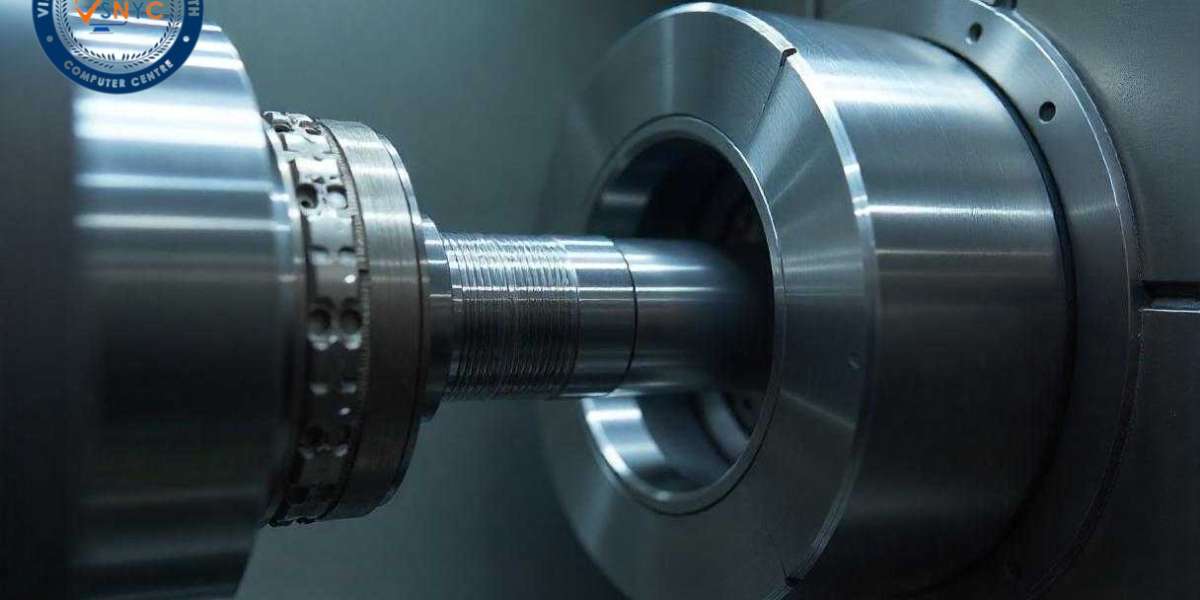In machining, holding a workpiece tightly and safely is just as important as cutting it. That’s where soft jaws for lathes come in. These special jaws help machinists work faster, more accurately, and with fewer mistakes. They are perfect for holding delicate or oddly shaped parts that hard jaws might damage.
In this simple guide, we will explain what soft jaws are, when to use them, and how they can help in your shop. Whether you’re working with fragile materials or making the same part again and again, soft jaws might be the right tool for you.
What Are Soft Jaws?
Definition and Design
Soft jaws are clamps made from softer metals like aluminum, brass, or mild steel. They are attached to the lathe chuck and hold the workpiece during machining. Unlike hard jaws, which are more rigid, soft jaws are designed to be custom-machined to fit each specific part. This means they can hold the part more securely and without causing damage.
Because soft jaws are machined to match the shape of the part, they often come as a solid block. The machinist cuts the shape of the part into the soft jaws before using them to clamp the actual piece.
Types of Soft Jaws
There are different types of soft jaws, depending on the job:
General Purpose Soft Jaws: These are basic jaws that can be shaped for many kinds of parts.
Custom Soft Jaws: Made for a specific part, they are ideal when you need a very tight fit or unique shape.
Clamshell Soft Jaws: These jaws open and close like a shell around the part, offering extra support for complex shapes.
Why Use Soft Jaws?
Improved Workholding
Soft jaws are excellent for holding delicate or irregular-shaped parts. Their soft metal construction helps avoid leaving marks or dents on the workpiece. This is very helpful when working with parts that can be easily scratched or damaged.
Consistency and Precision
One of the biggest advantages of soft jaws is repeatability. Because they are shaped to fit a specific part, every piece is held in exactly the same way. This leads to:
Fewer setup errors
More consistent results
Higher precision in cutting and finishing
Cost and Time Savings
Using soft jaws can save both money and time in the workshop:
Less rework: Because the parts are held more gently, there's a lower chance of damage or mistakes.
Faster setup: Once the soft jaws are machined for a part, you can reuse them for multiple runs, speeding up your setup process.
When to Use Soft Jaws
Complex or Irregular Shapes
Soft jaws shine when the part you need to hold doesn’t have a simple shape. For example, a thin-walled tube or a part with curves or holes in odd places.
Because soft jaws can be cut to match the shape exactly, they give a secure hold without damaging the part. Hard jaws often don’t provide this level of contact or protection.
Repetitive Production Runs
If you’re making the same part over and over, soft jaws are a smart choice. Once you machine the jaws to match the part, you can use them again and again. This reduces:
Setup time
Measurement errors
Part movement during cutting
That’s why soft jaws are often used in batch production.
High-Precision Machining
Soft jaws are perfect for jobs where tight tolerances are required. When even a tiny shift in position could cause a problem, soft jaws hold the part in the exact same way every time.
? Expert Tip: Use soft jaws for the finishing pass in precision machining. This ensures the final cuts are clean and accurate.
Sensitive or Fragile Materials
When working with soft plastics, foam, or other fragile materials, hard jaws can cause crushing or deformation. Soft jaws help you avoid this by providing a gentle but firm grip.
They are often used in industries like:
Medical device manufacturing
Aerospace components
Electronics and robotics
When to Avoid Soft Jaws
While soft jaws have many benefits, they are not perfect for every job.
High-force Operations: In heavy-duty or high-force cutting jobs, soft jaws might not be strong enough. They can deform under too much pressure.
Rigid Holding Required: For very hard or heavy materials that need solid, unchanging grip, hard jaws may be a better option.
Always match the jaw type with the job needs.
How to Properly Use Soft Jaws
Machining Soft Jaws
Before using soft jaws, you need to machine them to fit the part. This is usually done on the same lathe. Here’s what to keep in mind:
Machine with the same chuck that will be used for the job.
Use light cuts to avoid distorting the jaw material.
Make sure the shape matches the part exactly.
This process is called “bore soft jaws” or “boring in place.”
Preparing Jaws Before Clamping
Before clamping a part, follow these steps:
Clean the jaws: Remove dust, oil, or chips.
Inspect for damage: Look for cracks or dents.
Deburr: Sharp edges or burrs can damage parts.
Clamping Tips
Use consistent pressure: Don’t over-tighten.
Avoid jaw wear: Check and replace jaws regularly.
Protect delicate parts: Always use soft jaws on materials that can be scratched or crushed.
Expert Insights Case Study
“Soft jaws are a key tool for precision machining,” says John Smith, a veteran machinist with over 25 years of shop experience. “We use them daily for tight-tolerance parts.”
Case Study: Real Shop Success
A small aerospace machine shop switched to using soft jaws for lathe operations when working with thin-walled aluminum parts. The result?
30% improvement in part consistency
25% reduction in setup time
Fewer part rejects due to clamp marks
Example: Holding Thin-Walled Tubes
In one case, the team had to machine a set of 0.5mm thin-walled tubes. Hard jaws crushed the part, but soft jaws held it gently and securely—no distortion, no scrap.
Actionable Takeaways
Here’s what every machinist should remember:
✅ Use soft jaws for lathes when dealing with delicate, custom, or repetitive parts.
✅ Machine the jaws carefully to match the workpiece.
✅ Keep jaws clean and check for damage regularly.
✅ Use soft jaws for high-precision, low-force jobs.
❌ Don’t use them when extreme force or very rigid clamping is needed.
By choosing the right jaws for the right job, you’ll get better results and save time.
Conclusion
Soft jaws for lathes are a smart tool for many machining jobs. They help hold parts safely and precisely, especially when the part is fragile, complex, or needs to be made many times.
With proper care and machining, soft jaws:
Improve precision
Save time
Reduce part damage
Make production smoother
If you're not using soft jaws yet, now is a good time to start. Invest a little time in setting them up, and they’ll help you do better work with fewer headaches. Whether you’re a beginner or an experienced machinist, soft jaws are a great addition to your workshop.








